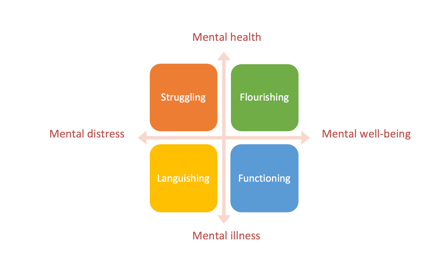The Mental Health and Well-being: Considerations for the Built Environment report offers evidence-based planning principles for health professionals and local governments and it explains how we can build neighbourhood spaces that promote mental health and well-being while mitigating unintentional negative impacts.
Our built surroundings can shape our daily activities and lifestyle choices in ways that are far more significant than most people would imagine. Our housing, how safe we feel in our neighbourhood, how connected we are to our neighbours, our options for active transportation, and how readily we can access healthy foods, parks and green spaces are all factors that can have a tremendous impact on our health. While physical health impacts associated with neighbourhood design are well established, the influence on mental health and well-being is an emerging research area that is deepening our understanding of what the term “healthy built environment” means and how diverse health outcomes are interconnected.
This report draws on input from content experts and broad literature reviews and the report itself describes how five key features of the built environment can be designed to either positively or negatively impact our health.
- Neighbourhood Design: Community planning goals that prioritize compact and connected design, have considerable health benefits such as increased access to services, active transportation options and opportunities for positive social connections. However mental health and well-being is compromised when development happens rapidly or without adequate consultation and it often results in over-crowding, housing unaffordability, and the alienation of existing residents who may feel pushed out of the community. Research shows that increasing density must be balanced with meaningful public engagement, care for community safety and inclusion, and appropriate land use mix with good quality infrastructure.
- Transportation Networks. Exposure to chronic traffic noise and congestion is associated with negative mental health impacts. Design solutions which minimize noise exposure and congestion, such as increasing options for active and public transportation, improve stress and anxiety.
- Natural Environments: Well-maintained and easily accessible green and blue spaces encourage a myriad of mental health benefits such as positive social involvement, physical activity, stress reduction, appreciation of beauty, and more. The positive mental health impacts of being exposed to natural environments is so strong that they can be found even when people are close to natural spaces but don’t directly interact with them, such as when they are visible through a window.
- Food Systems. This is a new area of research with limited findings, however positive mental health impacts such as social interactions, resilience and stress reduction are associated with community gardens, the availability of healthy food retail options, and access to culturally appropriate foods and Indigenous harvesting strategies.
- There is some evidence that living on the higher floors of high-rise buildings is associated with poorer mental health due to increased noise, crowding, and lack of play and social spaces. These unintended negative impacts can be mitigated by offering good quality housing infrastructure with design factors that promote positive social connections, air quality and thermal comfort, and neighborhood revitalization efforts to improve mental health and well-being.
Potential mental health impacts are important to consider within community planning efforts to build thriving and resilient communities. The Mental Health and Well-being report is intended to offer a practice tool for health professionals who are collaborating with local governments to support health priorities and evidence based decision making. It builds on the conceptual framework offered in the Healthy Built Environment Linkages Toolkit, and supports calls to action by Canada’s Chief Public Health Officer (2017) and other national documents highlighting the role of local planning and design to promote mental wellness.
The Mental Health and Well-being report was developed by BC Children’s Hospital and the BC Centre for Disease Control in consultation with expert advisors. For more information, contact charito.gailling@bccdc.ca.
Learn More:
- Read the report Mental Health and Well-being: Considerations for the Built Environment
- The HBE Linkages Toolkit synthesizes a collection of research findings that link planning goals to population health outcomes. The Toolkit identifies five interrelated features of the built environment: Neighborhood Design, Transportation Networks, Natural Environments, Food Systems, and Housing.






